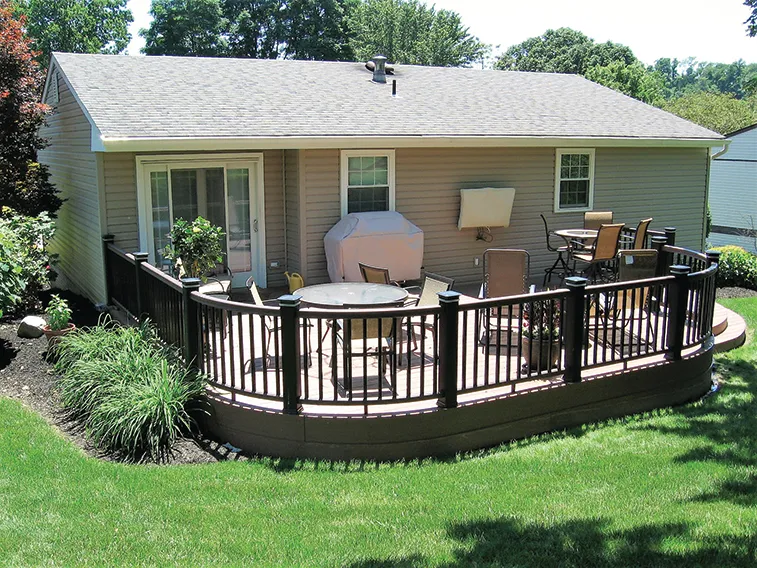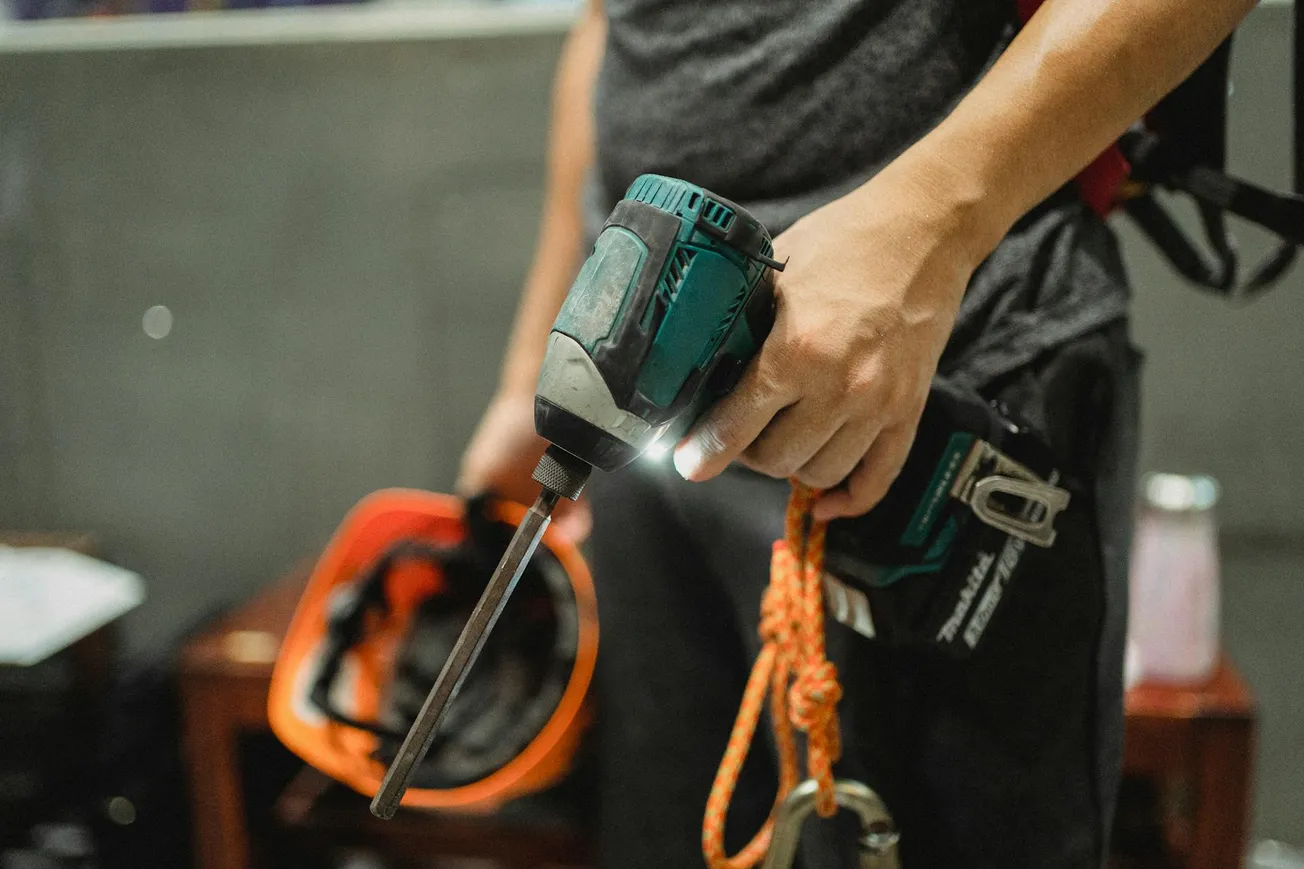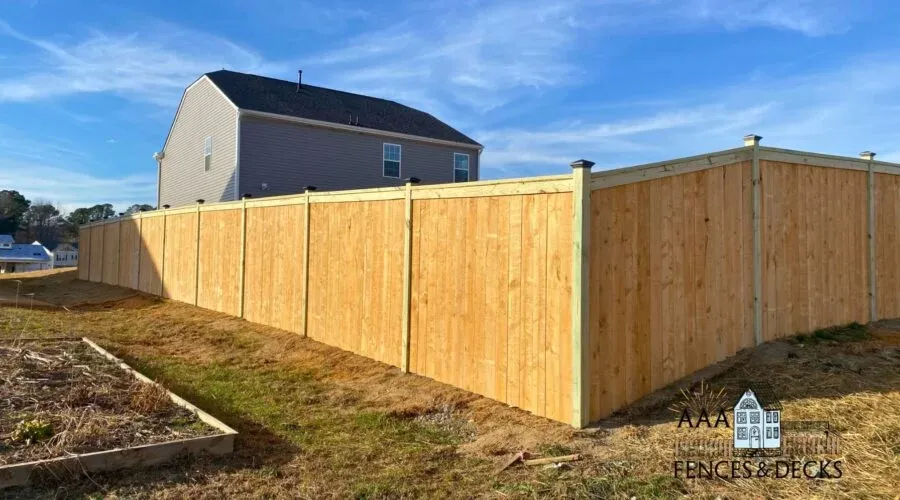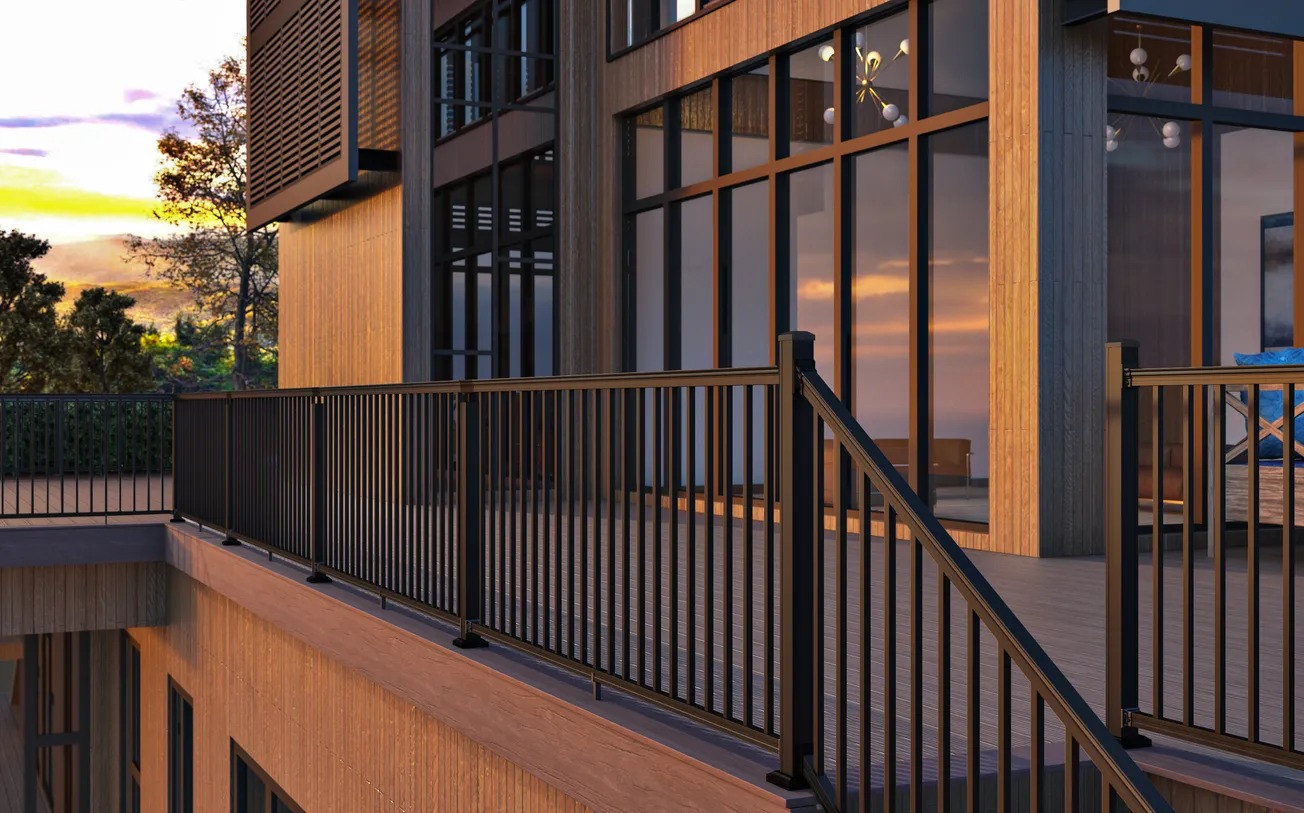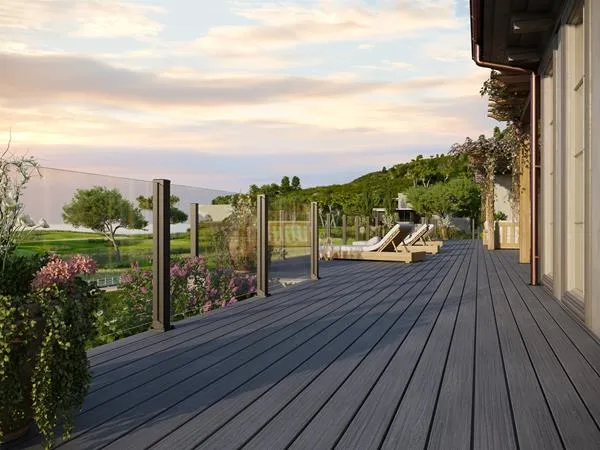Table of Contents
For years, a family’s go-to outdoor escape was little more than a pool with a modest deck. Today, the idea of outdoor living has expanded to multi-layer structures, elaborate patio lighting and fully functional outdoor kitchens.
But don’t mistake these requests for fleeting trends; they’re part of a growing shift that’s blurring the line between indoor and outdoor living. While homeowners have historically catered their indoor space to their lifestyle, many of them are now seeking ways to create a seamless flow between the inside and outside— a process that allows them to enjoy the best of both retreats.
For many people, the benefits of such an undertaking outweigh the costs. Today’s homeowners are enhancing yesterday’s preferences to create a unique and more memorable living experience.
Today’s homeowners have copious choices.
To give customers the outdoor experience they crave, contractors must be an expert in today’s wide range of material and design options. No longer is it enough to understand how to bring a patio, deck or pergola to fruition. Now you must be an expert in satisfying various requests, whether it’s a simple outdoor renovation or an immersive experience complete with outdoor fireplaces, collapsible window walls, backyard theaters, and pool terraces. And a critical part of that process is enabling customers to fully understand what’s available to them.
When it comes to materials, many homeowners look for convenient options that increase the overall aesthetic and value of their property. Composite decking—with its reputation as an effective low-maintenance alternative to wood—is a reliable choice across the U.S., but more exotic lumber options such as ipe, teak, cumaru, tigerwood and others are gaining ground. These hardwoods are tight grained, chemical free, and easy on the eye thanks to their striking color. They’re also eco-friendly and resistant to rot.
But more often than not, the choice of lumber comes down to budget, regional availability and customer preference. Pressure-treated southern yellow pine remains the go-to product across the country. Western homeowners, however, may also be drawn to redwood or Doug fir because of their prevalence in that region, whereas southern residents might be partial to cypress. Recommending materials that best suit your customer’s needs and tastes is critical to ensure a project’s success.
Peel back the project onion.
The next time you land a big outdoor living project, be sure to talk to your customer about the whole job. Stay focused on the big picture, even if your customer is only asking you to play a small part. By supporting their vision—and offering expert advice on how to make it a reality—you can have a significant impact on the project. Many contractors neglect to encourage their customers to make upgrades that will take their plan to the next level. While many homeowners have the means to enhance their project, they don’t want to be pushed to spend more money. The key is to use your knowledge, experience and common sense to find the right balance for both parties.
During the discovery conversation with your customers, don’t hesitate to ask questions that will help you better understand their vision and where they’re willing to invest. If a homeowner is building a deck, maybe they also foresee a detached pergola with a cooking center, a fabric-covered garden gazebo, or an outside lounge with a canopy. Work with them to envision the full picture, then cater your offerings to the intended use of the space. Do they need a built-in bench with storage for pool toys, or a gas line that’s fed to the grill? Even minor suggestions can do wonders for the overall project.
Collaboration is key.
Lumberyards are a wealth of knowledge and a reliable resource for contractors. Not only are they good for securing potential new business—many can help contractors acquire new leads—but they also have the materials and expertise to make your project efficient and successful. Some even have showrooms with eye-catching displays for inspiration. By collaborating with other experts, you’ll be effective in meeting your customers’ needs and building long-term relationships.


